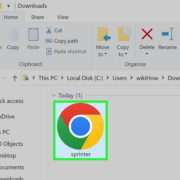In the late 1990s, the way we watch movies and TV shows began to change, thanks to a certain innovative service. This service, which started with the simple idea of allowing people to rent DVDs by mail, has grown into a behemoth of the streaming world. Its journey from a mail-based rental service to a global entertainment platform is a testament to the power of technological progress and market foresight. We’re talking about Netflix, a company that has become synonymous with streaming and has drastically altered the media landscape.

From DVDs to Streaming Giant
Netflix’s story is a classic example of how an innovative idea can transform an industry. Let’s take a closer look at its roots and how it evolved.
-
The Beginning
Netflix was founded in 1997 by Reed Hastings and Marc Randolph in Scotts Valley, California. The idea was initially inspired by a combination of a large late fee Hastings faced from a video rental store and the growing popularity of DVDs.Steps:
- Hastings and Randolph spotted a business opportunity in the emerging DVD mail-order rental market.
- They established the Netflix website, enabling customers to rent DVDs online to be delivered to their homes.
-
Introduction of the Subscription Model
In 1999, Netflix launched a subscription model, which allowed customers to rent an unlimited number of DVDs for a flat monthly fee, without due dates or late fees.Steps:
- Eliminate the traditional single-rental model.
- Introduce a no-commitment monthly subscription allowing unlimited rentals.
-
Going Public
In 2002, Netflix became a publicly traded company. This provided the necessary capital to expand its services and content library.Steps:
- Prepare for Initial Public Offering (IPO) through financial and business audits.
- Successfully launch the IPO to raise funds.
-
The Introduction of Streaming
A pivotal moment for Netflix came in 2007 when it introduced streaming, allowing subscribers to instantly watch television shows and movies on their personal computers.Steps:
- Develop and implement a streaming platform within the existing website.
- Offer a selection of movies and shows for immediate viewing.
-
Expansion of Streaming Library
Over the years, Netflix significantly expanded its streaming library, including not just licensed content, but also original productions.Steps:
- Negotiate licensing deals with content producers.
- Invest in the creation of Netflix original series and films.
-
Going Global
Netflix started its global expansion in 2010 by entering the Canadian market and by 2016, it was available in most of the world.Steps:
- Gradually enter new international markets, adjusting content for regional preferences.
- Overcome challenges such as language barriers and licensing restrictions.
-
Original Content Explosion
Netflix’s focus on original content became a dominant strategy, with hits like “House of Cards” and “Stranger Things” making it a major player in entertainment.Steps:
- Identify successful scripts and pitches from creators.
- Invest in the production of new and innovative content to attract and retain subscribers.
-
Legal Issues and Copyright
With great success comes great scrutiny. As Netflix grew, it faced numerous legal challenges related to copyright laws and content licensing.Steps:
- Engage in legal battles and negotiations to secure the rights for various content.
- Adapt the business model and library according to the outcomes of these legal issues.
-
Technological Advancements
Netflix has continually invested in technology, improving both streaming quality and customer experience through algorithms for personalized recommendations.Steps:
- Develop and refine data algorithms to tailor user recommendations.
- Upgrade streaming technology for efficient content delivery worldwide.
-
Facing Competition
As other streaming services entered the market, Netflix had to continuously innovate to maintain its leading position.
Steps:
– Constantly update and diversify the content library.
– Implement new features and improve user interface based on customer feedback.
Netflix revolutionized the way we consume media, offering unparalleled convenience and a massive, ever-growing content library. Its subscription model has influenced numerous other services in the entertainment landscape. While facing challenges like market saturation and increased competition, Netflix’s adaptive strategies and commitment to innovation have kept it at the forefront of the streaming industry.
In conclusion, Netflix’s ascent from a DVD rental service to a pivotal player in the entertainment sector is a narrative of persistent innovation and adaptability. Taking on traditional TV, battling tech giants in the streaming wars, and now producing some of the most acclaimed shows and movies signals Netflix’s commitment to remain an industry trailblazer. As the media landscape continues to evolve, we’ll undoubtedly see Netflix adapt, innovate, and possibly redefine entertainment once again.
FAQs
-
What was the key factor in Netflix’s transition from DVD rentals to streaming?
The rapid advancement of internet technology and widespread availability of high-speed connections laid the groundwork for Netflix’s shift towards streaming, catering to a growing consumer demand for instant access to entertainment. -
How does Netflix maintain a competitive edge in the streaming market?
With heavy investments in original content, constant enhancement of user experience, and a powerful recommendation algorithm, Netflix continues to attract and retain subscribers despite rising competition. -
What challenges does Netflix face in the content streaming industry?
Netflix faces challenges such as licensing restrictions, variable international content laws, rising costs of content production, and competition from other streaming services with similar or unique offerings.









